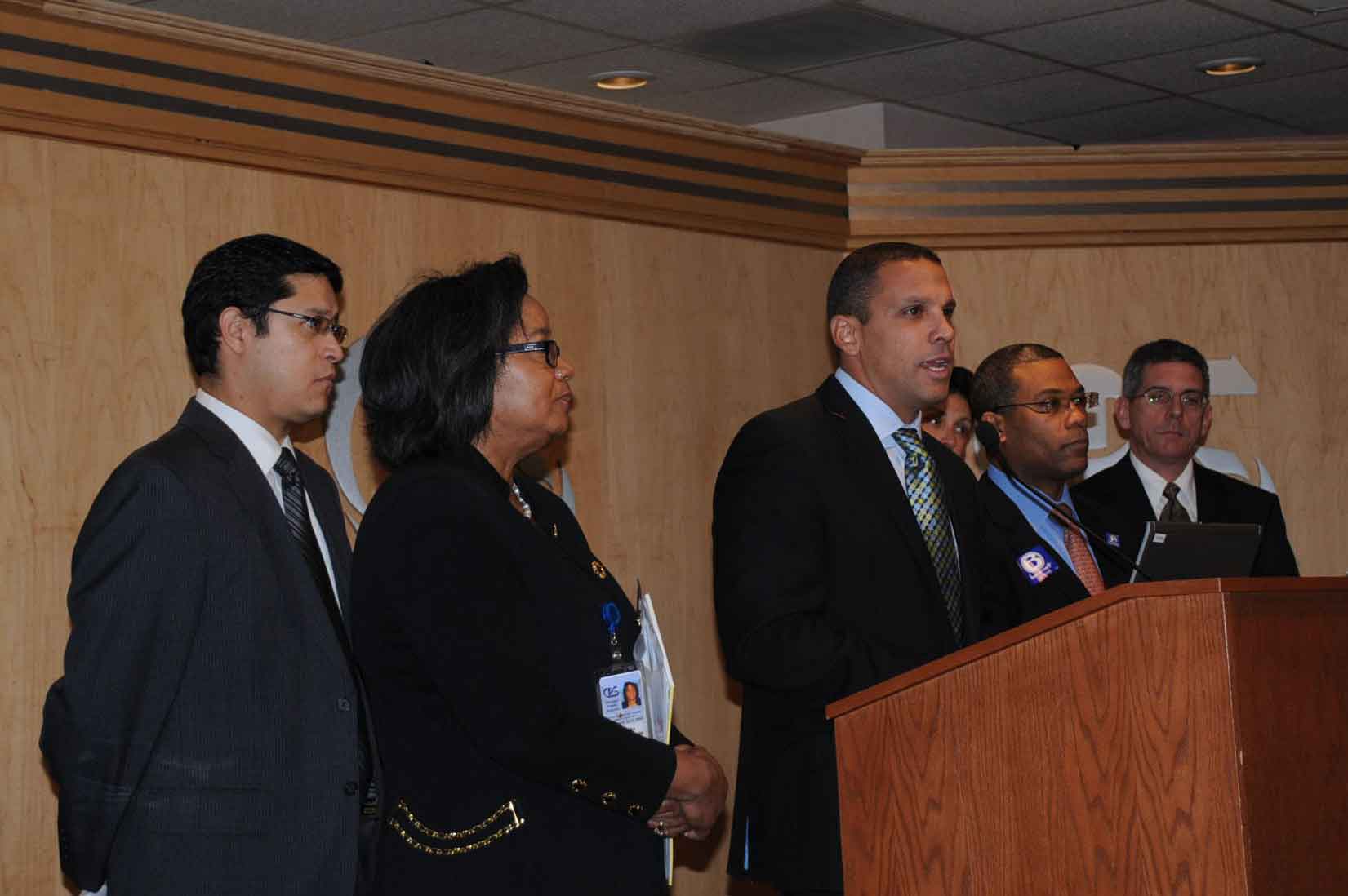Designs for Change charges new magnet school plan will increase segregation
Designs for Change issued a press release on December 15, 2009, charging that the Chicago Board of Education's plans to implement a new program for selecting students for magnet schools will increase segregation. The following is the exact text of the press release issued by Designs for Change (minus a chart that we could not reproduce here in a decent way). (George N. Schmidt, Editor, Substance).
PRESS RELEASE. December 15, 2009. For Immediate Release. Contact: Donald Moore 312.236. 7252 ex. 236, donmoore@designsforchange.org
 Flanked by aides who helped draft Chicago's latest segregation plan, CEO Ron Huberman presented the media with a Power Point at a November 10, 2009 press conference at CPS headquarters. Conspicuous by his absence was Chicago Board of Education President Michael Scott, who killed himself less than one week later. During the months preceding his death, Scott was excluded from more and more CPS and City Hall media events. For reasons which Huberman did not explain, the press conference included one of the 50 Chicago aldeermen, Walter Burnett (to Huberman's left). Substance photo by George N. Schmidt. Chicago School Board Uses End of Desegregation Settlement Agreement as
Flanked by aides who helped draft Chicago's latest segregation plan, CEO Ron Huberman presented the media with a Power Point at a November 10, 2009 press conference at CPS headquarters. Conspicuous by his absence was Chicago Board of Education President Michael Scott, who killed himself less than one week later. During the months preceding his death, Scott was excluded from more and more CPS and City Hall media events. For reasons which Huberman did not explain, the press conference included one of the 50 Chicago aldeermen, Walter Burnett (to Huberman's left). Substance photo by George N. Schmidt. Chicago School Board Uses End of Desegregation Settlement Agreement as
a Smokescreen for Creating a More Segregated School System
Proposed School Board Policy Changes with the Most Impact in Increasing Segregation in Magnet Schools Have Nothing To Do with Settlement Agreement's End
Chicago, IL (December 14, 2009). The Chicago Board of Education has proposed a plan for admitting students to Chicago's magnet schools that they claim is a "creative solution" to a federal court desegregation ruling.
Chicago's magnet schools are 41 schools for which students must apply, for which students are supposed to be chosen by lottery without special academic requirements. They include schools like Galileo Math and Science Academy, Inter-American Magnet School, Sheridan Math and Science Academy, and Disney Elementary Magnet School. There were about 26,000 applications to attend these schools a year ago.
As part of its new policy, Chicago is proposing not one lottery, but three lotteries for each school. "And Chicago's proposed changes in the admissions lottery process that will have the biggest impact in limiting spaces available for low-income students and students of color have nothing to do with complying with the federal court's ruling," according to Dr. Donald Moore, Executive Director of Designs for Change. According to Moore, these changes with the most impact are the following:
· First, giving increased preferences to the siblings of students who are already attending a magnet school (which would be increased from 45% of sibling applicants to 100% of sibling applicants).
· Second, giving 50% of the remaining spaces to applicants who live within 1.5 miles of the school (a "proximity preference" lottery)-after siblings are admitted. "Finally, the Chicago Board would give 50% of the remaining spaces after siblings are admitted to "other applicants," based on four levels of the wealth of the "census tract" in which the applicant lives. Admitting students in these four socioeconomic groups is the part of Chicago's plan that they are trumpeting," according to Moore
"The first two special preferences for siblings and students who live close to the school have been lumped in with and obscured by the Chicago Board's new plan to admit some students because they live in one of four levels of census tracts, based on the average wealth of their census tract" according to Moore. This selection from four levels of census tracts is planned to replace selection based on using a students' race as a criteria for admission to magnet schools. Although the Chicago Board claims it can no longer use race in admitting students, Harvey Grossman of the Chicago ACLU has argued that court decisions allow a school system to "take race into account," along with other student characteristics.
"The entire plan is scheduled to be approved at the December 16 Board of Education meeting, after poorly-publicized hearings on the plan, at which most of those who testified opposed the plan," Moore said.
"The worst part of this plan will be its impact over a period of several years," according to Moore. "The proposed policy will turn most of Chicago's magnet schools into neighborhood schools that are segregated by race and by income. Most schools located in predominantly white neighborhoods are now racially diverse. They will become almost entirely white."
To see how this process will actually work, look at the explanation of the plan on the Chicago Board's own website, in the section titled "Office of Academic Enhancement," in a document located on this website, titled CPS Proposed New Admissions Plan Updated 12 2 09.

